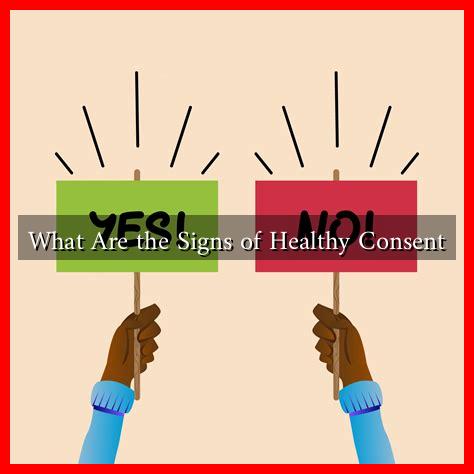-
Table of Contents
What Are the Signs of Healthy Consent?
Consent is a fundamental aspect of any relationship, whether it be romantic, sexual, or even platonic. Understanding the signs of healthy consent is crucial for fostering respectful interactions and ensuring that all parties feel safe and valued. This article delves into the key indicators of healthy consent, providing insights and examples to help clarify this essential concept.
Understanding Consent
Consent is defined as an agreement between participants to engage in a specific activity. It is not just a one-time event but a continuous process that requires clear communication and mutual respect. Healthy consent is characterized by several key elements:
- Clear Communication: All parties should express their desires and boundaries openly.
- Mutual Agreement: Consent must be given freely and without coercion.
- Ongoing Process: Consent can be revoked at any time, and it should be checked regularly.
- Informed Decision: All parties should have a full understanding of what they are consenting to.
Signs of Healthy Consent
Recognizing the signs of healthy consent can help individuals navigate their relationships more effectively. Here are some key indicators:
1. Enthusiastic Agreement
Healthy consent is characterized by enthusiasm. When individuals are excited about participating in an activity, it indicates that they are genuinely interested. For example, if both partners express eagerness to engage in a particular activity, it reflects a positive and consensual environment.
2. Verbal Affirmation
Clear verbal communication is a strong sign of healthy consent. Phrases like “yes,” “I want to,” or “let’s do this” are affirmative and indicate that all parties are on the same page. Conversely, ambiguous responses or silence should be interpreted as a lack of consent.
3. Body Language
Non-verbal cues play a significant role in understanding consent. Positive body language, such as leaning in, maintaining eye contact, and smiling, can indicate comfort and agreement. On the other hand, crossed arms, avoidance of eye contact, or physical withdrawal may suggest discomfort or a lack of consent.
4. Respect for Boundaries
Healthy consent involves respecting each other’s boundaries. If one party expresses discomfort or a desire to stop, the other should immediately honor that request without question. For instance, if someone says, “I need a break,” it is essential to pause and check in with their feelings.
5. Ongoing Check-Ins
Consent is not a one-time agreement; it should be revisited throughout the interaction. Regular check-ins, such as asking, “Are you still comfortable?” or “Do you want to continue?” demonstrate care and respect for each other’s feelings.
Statistics and Case Studies
Understanding the importance of healthy consent is underscored by various studies and statistics. According to a survey conducted by the Rape, Abuse & Incest National Network (RAINN), nearly 1 in 5 women and 1 in 71 men in the U.S. have been raped at some point in their lives. Many of these incidents stem from a lack of clear consent.
Additionally, a study published in the journal Sexuality Research and Social Policy found that individuals who engage in open discussions about consent are more likely to have positive sexual experiences. This highlights the importance of fostering an environment where consent is prioritized and respected.
Conclusion
Healthy consent is a vital component of any relationship, ensuring that all parties feel safe, respected, and valued. By recognizing the signs of healthy consent—enthusiastic agreement, verbal affirmation, positive body language, respect for boundaries, and ongoing check-ins—individuals can create a more respectful and understanding environment. As we continue to educate ourselves and others about the importance of consent, we can work towards healthier relationships and a more informed society.


